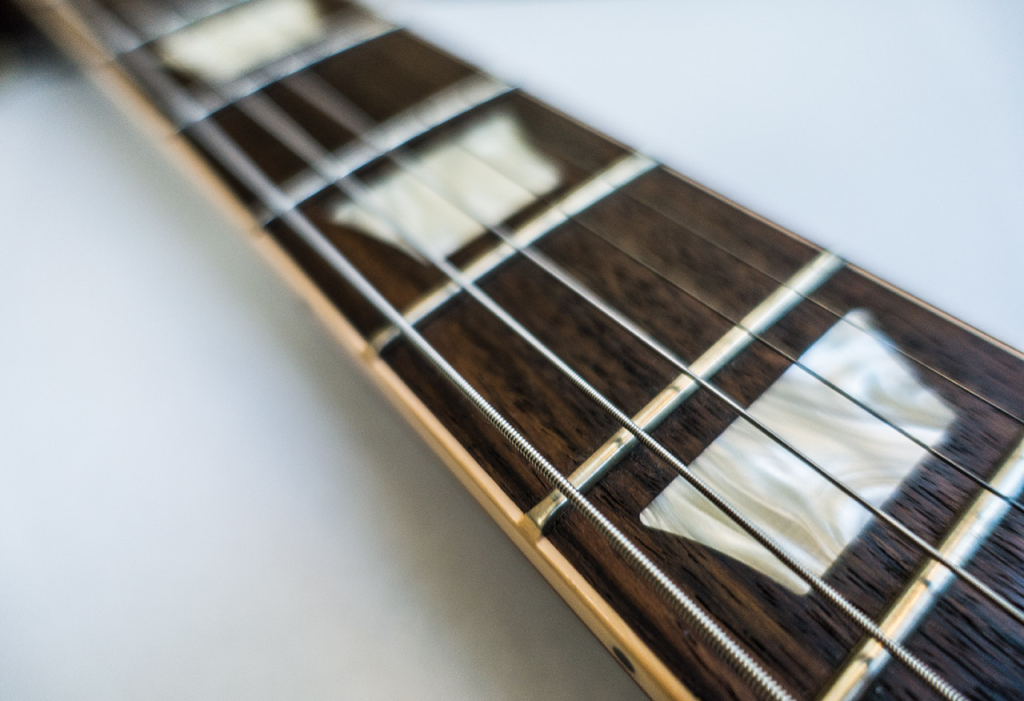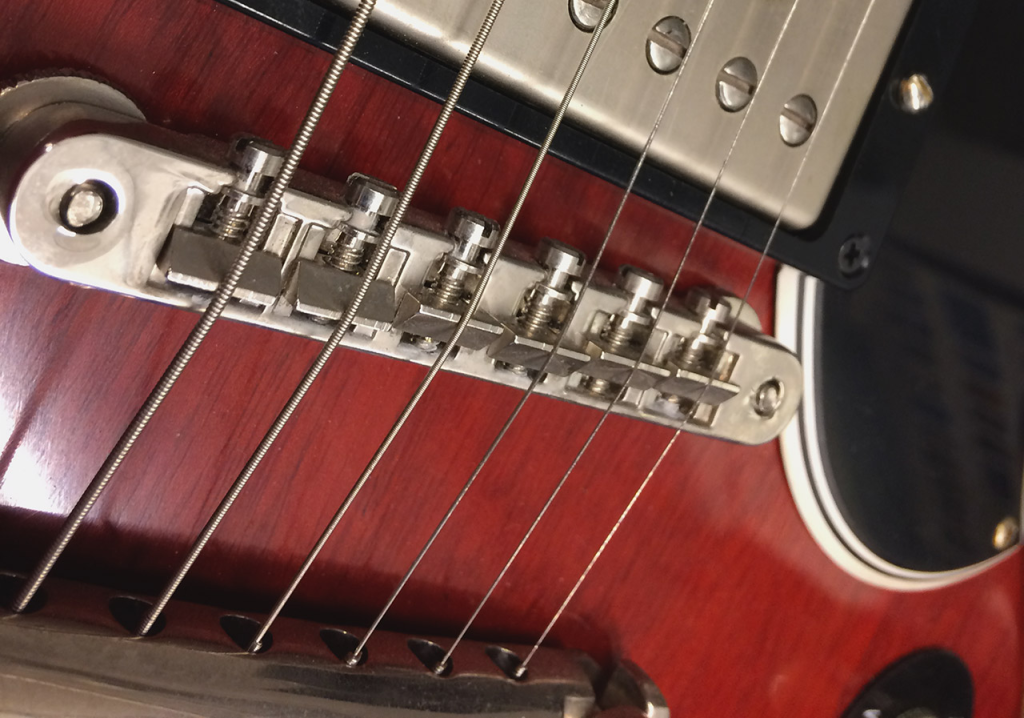From guitar stores to garage sales, choose wisely with the help of our essential guitar-buying checklist
Many factors should affect choosing a guitar, whether you’re a beginner or an advanced player. It’s helpful to have a checklist on hand before initiating any first guitar purchase to help ensure the quality of your investment and to maximize the potential for a “keeper” instrument. A guitar with positive marks on all these factors has a much higher chance of being a joy to own and play. This approach can apply to acoustic or electric instruments for sale in guitar stores, as well as pawnshops, estate sales, and garage sales.
The Style of the Guitar
What should your guitar look like? Classic or modern? It doesn’t matter if you feel a connection to the instrument. That connection could simply be that it appeals to you aesthetically or perhaps because of an association with another player you admire. Plenty of serviceable instruments out in the world lack an appealing shape and color, but it’s reasonable to say that if you love how your guitar looks, you’ll be more likely to pick it up and perform with confidence. So, find a guitar that is interesting to you right off the bat. You’ll look back fondly on that guitar even if you upgrade later—it’ll always be a part of your story.
GENERAL CONDITION

Neck: is it straight with a little relief so the strings can ring without rattling against the frets? Does the truss rod function? To check relief, measure string clearance around the middle of the neck while holding down the low E string at both the first and final fret—and make a quick adjustment if necessary. Do the frets have some life in them? If the frets are excessively worn, the cost of a complete fret job will likely nullify any “bargain” you think you’re getting unless it’s a real steal on a highly desirable model. Are there any cracks or fissures at the headstock or body joint? If so, reject that guitar unless there’s a compelling reason to think that paying for repairs will be profitable.
If it’s a bolt-on neck, is there excessive side-to-side play that can’t be eliminated by tightening the mounting screws? And will the mounting screws tighten fully? Stripped screw holes are a major issue in used instruments.
If it’s a set neck, are there any signs of a faulty joint, such as cracks, excessive finish checking around the heel, or strings that rise—or fall—drastically from the point of the neck joint to the bridge?
The main thing to look for in a neck is functionality. With a reliable truss rod, one can alter both the tone and feel of a guitar quite a lot.
Gibson asked Jared James Nichols, “What do you look for in a neck setup? Does your penchant for playing without a pick affect your preferences in this?

“Neck setup is critical! I am a very ‘bendy’ and wild player; I need the neck adjusted and primed up for extreme bends/vibrato. I prefer a slight bow, bigger frets, and a medium action. As far as string size on my Les Pauls, I use a standard 10-46. Being a fingerstyle player, I do tend to react a little differently than most when playing electric guitar. I focus on the tension and pressure coming from my strings at all times. Another massive reason why I love playing Gibsons is the shorter scale length and set-neck construction. It inspires me to play at my best, and I feel instantly connected to the instrument.”
So, as he points out, the way you intend to attack the strings (pick or fingers) can affect setup preferences. Gibson offers a free Virtual Guitar Tech Service to guide you through these options since factory setup parameters may not suit everyone, and your needs over time may change as you grow as a player.
Body: check the general stability of the wood, especially any cracks if it’s an acoustic, semi-acoustic, or archtop in particular. Check for cracks around the jack or jack plate, which is one common stress point.
If the guitar has a removable pickguard, check under it to see if any wood has been routed in the past to add a non-standard pickup. On acoustic flat-tops, check for excessive “belly” (upward bulging) between the bridge and the endpin (AKA the strap pin)—note that some bellying is normal in many designs, but drastic bellying might be a sign of excessive string tension having existed over a long period of time.
Finish: check for signs of original finish; this can be difficult, as there are many excellent refinishers out there, and even an expert can sometimes have difficulty detecting a good one away from their tools and reference materials. Rule out the obvious or amateur refinish—and if it seems to have one, make sure the price has been reduced accordingly, especially if it’s a guitar with potential vintage value.

Hardware: is it all stable and functional? Do the tuners work without slipping? Note that poor tuning stability is usually not the fault of the tuners, although a tuner that is genuinely loose or slipping is a problem. Are the string holes on the tuning machine large enough for the gauge of strings you intend to use? This consideration will probably only be an issue if you use specialized sets for drop tuning or open tunings.
Is the bridge secure, with sturdy saddles and slots that are not too worn out? Does it all move smoothly for intonation and height adjustment? Are the nut slots in good condition, spaced correctly, and not over-worn? Like the string holes, nut slots must correspond to the intended string gauge.
Electronics: are the pickups working in all positions? Is there any serious intermittency in switches or pots? Minor scratchiness is pretty easy to clean out with a squirt of contact cleaner, but bigger issues like shorts or bad pots/switches might be more frustrating to repair, although they aren’t deal-breakers if the price is right. Faulty or intermittent pickups, on the other hand, are usually a more expensive proposition—an easy $40 each plus installation costs, minimum, just for basic generic replacements.
Gibson asked Jared James Nichols, “What aspects of a single-pickup guitar did you find surprising? What draws you toward a bridge-pickup-only configuration?”
He said, “The simplicity. Originally, I was drawn to the spartan design that a single-pickup electric guitar offers. Before playing one, most players would assume they are a one-trick pony, but they are quite the opposite! Within the limitations of the simple design, a player is forced to find all of the tones and colors by using the tools available. Single-pickup guitars force you to PLAY! You are hyper-focused on using your hands to adjust dynamics, more critical of your tone, and completely inspired by your imagination. For myself, single pickup electric guitars are freedom.”
PLAYABILITY
Action: is the action comfortable to play, and if not, can it be adjusted with a simple bridge adjustment and/or a half turn of the truss rod in either direction?
Neck: does the neck profile and thickness feel good in your hand? Is the string spacing appropriate to your playing style?
Playing comfort: does it simply “feel good” in both sitting and standing positions? Are there any sharp edges on the bridge, frets, or nut that hurt when you move your hand across them during play?
TONE
Tone is the most ethereal of considerations, but it is something you should try to assess upfront. If an acoustic plays great, sounds great, and seems generally solid—and the price is right—that’s about all you need to know.
If an electric guitar feels great but really doesn’t sound good to you (provided you’ve got a real amp to try it through and not just the sizzle box you brought along to make sure the electronics function), you’ll have to assess whether you want to risk the expense of replacing pickups or tone-enhancing hardware on the guitar to try to improve it. This is tough—it’s your call.
ACCESSORIES
You can shop à la carte for accessories, but beginners might enjoy one of the various player packs which are available from Gibson Brands—they contain everything you need to get started: a small amplifier, a guitar cable, picks, and even instruction materials to aid you in avoiding bad habits at the start of your journey. The Gibson App is also a terrific way to gain knowledge and keep your instrument in tune. More advanced players can create a custom pack using our official Accessories, Hardware and Strings, amplification from Mesa Boogie, and tone-sculpting pedals from Maestro.

